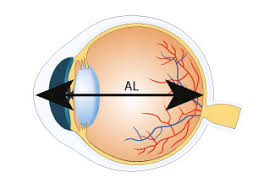Table of Contents
ToggleAre you contemplating LASIK surgery to correct your vision but concerned about the feasibility due to fluctuations in your eyeglass prescription?
The decision to undergo LASIK is an important one, particularly when dealing with prescription changes.
Let’s explore in-depth whether LASIK is a viable option for individuals whose prescription keeps changing.
Understanding Prescription Changes
Prescription changes in vision indicate your eye is still undergoing modifications in its shape or internal focusing power.
It can occur due to various factors, including age-related shifts, refractive changes, health conditions, and temporary influences like medication use or pregnancy.
These fluctuations can complicate the decision-making process for vision correction procedures such as LASIK.
- Age-related Changes: Eye prescriptions typically stabilise in adulthood, typically around 18-20 years old. Younger individuals may experience more frequent minor changes in their prescription.
Moreover, as we age, especially beyond our 40s, our eyesight can naturally decline due to presbyopia, which affects near vision.
- Refractive Changes: Conditions like myopia (nearsightedness), hyperopia (farsightedness), or astigmatism can cause variations in prescription over time.
- Health Factors: Underlying health conditions such as diabetes, autoimmune disorders, or hormonal changes can impact vision stability.
- Temporary Influences: Certain medications, hormonal fluctuations (such as during pregnancy), or eye strain can lead to temporary changes in vision prescription.
LASIK Suitability with Changing Prescriptions
LASIK is generally recommended for individuals with stable vision prescriptions for at least a year.
However, occasional minor changes in prescription, typically less than 0.50 diopters, may not necessarily disqualify you from undergoing LASIK, provided certain conditions are met.
Evaluating Prescription Stability
Your eye doctor will conduct a thorough assessment to evaluate the stability of your prescription before recommending LASIK. This assessment involves reviewing your past prescriptions over a period and analysing the trend of changes.
Factors considered include:
– Consistency: The consistency of prescription changes over time.
– Magnitude of Change: The extent of prescription fluctuations and their impact on vision.
– Underlying Causes: Identifying any underlying causes contributing to prescription changes.
Factors to Consider Before LASIK
- Age: LASIK is typically recommended for adults whose eyes have fully matured. If you’re under 18, your eyes may still be changing.
- Health Conditions: Certain health conditions can affect the stability of your vision and impact the suitability of LASIK.
- Pregnancy: If you’re pregnant or planning to become pregnant, it’s advisable to wait until after your hormonal levels stabilise post-pregnancy.
Consultation and Comprehensive Eye Examination
Before undergoing LASIK, you’ll undergo a comprehensive eye examination to assess your overall eye health and determine the stability of your prescription. This examination includes:
– Corneal Mapping: Mapping the shape and thickness of your cornea.
– Pupil Dilation: Examining the interior structures of your eye.
– Corneal Thickness Measurement: Ensuring adequate corneal thickness for LASIK.
LASIK and Fluctuating Prescriptions
If your prescription has been relatively stable over the past year, even with occasional minor changes, LASIK may still be a viable option. LASIK corrects refractive errors by reshaping the cornea and focusing light directly onto the retina to improve vision.
Potential Risks with Changing Prescriptions
It’s important to acknowledge the potential risks associated with undergoing LASIK with a fluctuating prescription:
– Suboptimal Results: Fluctuating prescriptions can impact the long-term effectiveness of LASIK, potentially resulting in suboptimal vision correction.
– Need for Enhancements: Individuals with changing prescriptions may require enhancements or touch-up procedures post-LASIK to maintain optimal vision.
Beyond Stability: Other Factors for LASIK Candidacy
Expanding on prescription stability, other factors also play a critical role in determining LASIK candidacy:
– Corneal Thickness: Adequate corneal thickness is crucial for the safety and success of LASIK surgery.
– Overall Eye Health: Certain conditions like keratoconus can affect candidacy for LASIK.
– Dry Eyes: Chronic dry eye can impact LASIK recovery and long-term outcomes.
Alternative Options for Vision Correction
If LASIK isn’t suitable due to prescription instability, alternative vision correction options might be considered:
– PRK (Photorefractive Keratectomy): Similar to LASIK but involves removing the outer layer of the cornea. It’s often recommended for patients with thinner corneas or other corneal issues.
– Contact Lenses: Depending on the nature of prescription changes, contact lenses might offer a more flexible solution.
– Orthokeratology (Ortho-K): It involves wearing rigid gas-permeable contact lenses overnight to gently reshape the cornea. This temporary reshaping can provide improved vision during the day without the need for corrective eyewear.
– Regular Eye Exams: Routine eye exams are essential for monitoring changes in your vision and ensuring timely intervention.
The Road to Clear Vision: Patience and Communication
While a fluctuating prescription can pose challenges when considering LASIK surgery, it doesn’t necessarily rule out the possibility of undergoing this procedure.
The key lies in consulting with an experienced eye care professional who can assess the stability of your prescription and recommend the most suitable vision correction option for your unique needs.
Every individual’s eyesight is different, and personalised evaluation is crucial in determining the best course of action for achieving a clear, stable vision.
Take the first step by scheduling a comprehensive eye exam to explore your options and embark on the journey toward clearer vision with confidence! If LASIK isn’t the right fit due to prescription changes, rest assured that there are alternative solutions available to help you achieve optimal vision.
It’s essential to emphasise that the information shared here is for informational purposes only and should not substitute professional medical advice. Always consult with a qualified ophthalmologist to discuss your suitability for LASIK and explore other vision correction options tailored to your individual needs.













